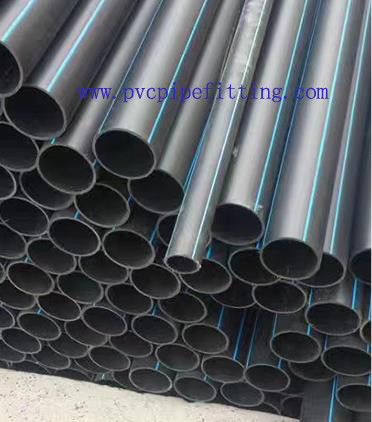Analysis of Causes of Rough Surface of PE Pipe
CHINA plastic pipes are developing rapidly, and their quality is constantly improving. Among them, polyethylene PE pipes are widely used in building water supply, building drainage, buried drainage pipes, building heating, gas transmission pipes, electrical and telecommunications protection sleeves, industrial pipes, agricultural pipes, etc. due to their unique advantages. It is mainly used in the fields of urban water supply, urban gas supply, and farmland irrigation.
1. PE pipes first remove the roughness caused by moisture. Only for PE new materials.
2. The roughness of PE pipes only occurs on a very thin layer on the surface, which is also a kind of melt fracture, but it is different from the usual melt fracture. The usual melt fracture is the unstable flow of the entire melt. The surface roughness only occurs in a very thin layer on the surface of the pipe. The roughness of the pipe is formed in the die section. When the surface of the PE pipe is smooth, the molecules on the surface of the melt need to reach a certain degree of relaxation before exiting the mold.
3. Physical explanation of the rough surface of PE pipe:
A. Roughness is caused by the friction between the melt and the mold surface and has nothing to do with the surface roughness of the mold (not considering scratches). This friction is caused by the adhesion between the melt and the metal surface of the mold.
B, PE pipe surface finish needs lubricant.
“High-density polyethylene with low viscosity can form a lubricant on the surface of the mold as the extrusion progresses. Because the molecular chains of low-viscosity polyethylene have relatively few entanglement points, as the extrusion progresses, under the action of the mold surface, part of the molecular chains will be separated from the melt and “hang” on the surface of the mold to form a lubricant, This kind of lubrication is dynamically balanced. For high-viscosity polyethylene, due to the strong entanglement between the molecular chains, the molecular chains are not easily separated from the melt, so effective lubrication cannot be formed, and the surface of the pipe will be very rough.
C, the surface of high-viscosity polyethylene is rough.
Take out a molecule from the surface of the melt as the test object. One end of this molecule adheres to the surface of the mold, and the other end is entangled with other molecules, so that force exists at both ends of this molecule. Due to the strong entanglement of high-viscosity polyethylene, the adhesion of the molecule to the mold surface is sliding, and the molecule is “straightened”. Since the molecule has been in a stretched state before exiting the mold, it cannot be bent in time after the exit mold, and only after the exit mold can it be bent. The result of the bending of the exit mold is the formation of pits on the surface of the pipe.
D, the friction between the melt and the die is also the cause of the die deposit.
https://www.pvcpipefitting.com/analysis-of-causes-of-rough-surface-of-pe-pipe/

没有评论:
发表评论